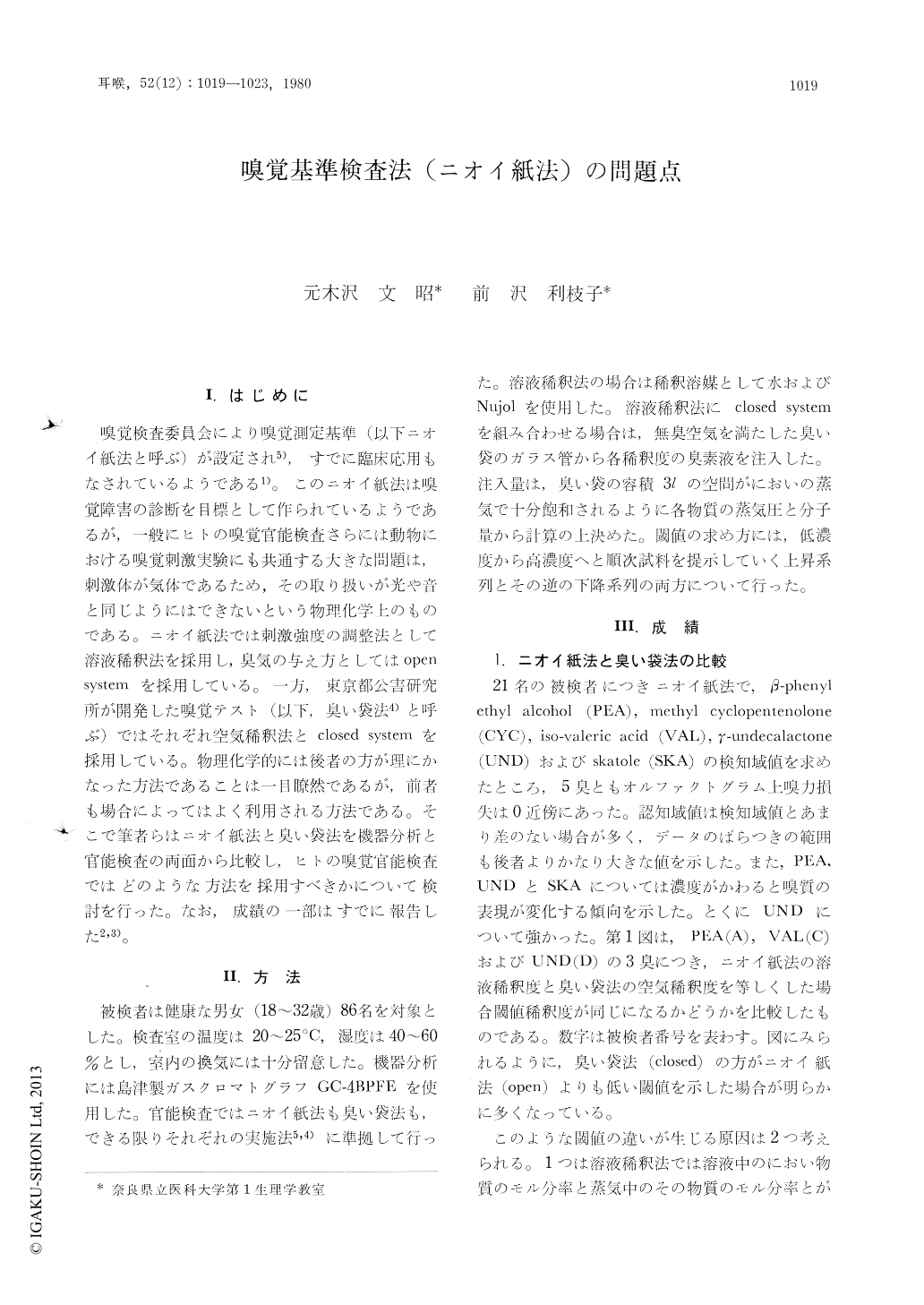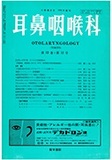Japanese
English
- 有料閲覧
- Abstract 文献概要
- 1ページ目 Look Inside
I.はじめに
嗅覚検査委員会により嗅覚測定基準(以下ニオイ紙法と呼ぶ)が設定され5),すでに臨床応用もなされているようである1)。このニオイ紙法は嗅覚障害の診断を目標として作られているようであるが,一般にヒトの嗅覚官能検査さらには動物における嗅覚刺激実験にも共通する大きな問題は,刺激体が気体であるため,その取り扱いが光や音と同じようにはできないという物理化学上のものである。ニオイ紙法では刺激強度の調整法として溶液稀釈法を採用し,臭気の与え方としてはopensystemを採用している。一方,東京都公害研究所が開発した嗅覚テスト(以下,臭い袋法4)と呼ぶ)ではそれぞれ空気稀釈法とclosed systemを採用している。物理化学的には後者の方が理にかなった方法であることは一目瞭然であるが,前者も場合によってはよく利用される方法である。そこで筆者らはニオイ紙法と臭い袋法を機器分析と官能検査の両面から比較し,ヒトの嗅覚官能検査ではどのような方法を採用すべきかについて検討を行った。なお,成績の一部はすでに報告した2,3)。
The methods of stimulus preparation (air dilution method and solvent dilution method) and stimulus delivery to the receptor (open system and closed system) were compared gas-chromatographi-cally and psychophysiologically.
1) There was no linear relationship between the concentrations of the odorants in a solution and in air head space used in this study.
2) When the subjects sniffed odor from an odor bag (closed system), the threshold concentration was different between in the solvent dilution method and in the air dilution method.
3) The threshold concentration was distinctly lower in the closed system than in the open system (the subject sniffs odor from a filtration paper containing the odorant's solution).
4) When the odors was presented with an ascending series of the concentration and a descending series, there was no significant difference in the threshold concentration between them.

Copyright © 1980, Igaku-Shoin Ltd. All rights reserved.


